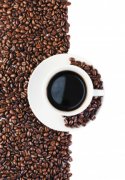How to make perfect Italian concentrated Italian blended bean Italian coffee machine latte concentrated milk foam

The process of making espresso in Italy is much simpler today than it used to be. Baristas can improve the quality of coffee with the help of thermostatic bean grinders, electronic scales, laser scatterers and other tools. We all know that the production of espresso in Italy is a rigorous science, but how many people can guarantee that the quality of coffee made every time is constant? I don't think the key is how advanced the tools you use. In a sense, advanced equipment does help us improve the process of making espresso. Baristas in the past did not have such equipment and did not know so much about espresso. At that time, the quality of each cup of coffee we made was different, and the perfect espresso was almost untouchable to us, even if we happened to make a cup of coffee of near-perfect quality. We can't sum up the successful experience from it. Normally, I make more than 300 cups of coffee a day. I use the Black Eagle espresso machine and the Mythos and Clima Pro bean grinders. I will also use electronic scales and make daily recipes before opening the shop, and I will keep trying until the coffee tastes sweet and palatable. In addition, I clean my coffee machine every 30 minutes. I am a very cautious person. If the degree shown on the electronic scale is 10.6 grams instead of the 10 grams I set in advance, I will immediately adjust to reduce the error to less than 0.2 grams. If the coffee is made for too long, I'll just pour out that cup of coffee. I think this is the right way to make espresso. But am I really right? To answer this question, I invited one of the highest-level baristas in the world, my coffee hero, Gwellim Davis, who is as dedicated to cleaning the coffee machine as I am.
Gvelum has been working as a barista since 1997. He has traveled to 36 countries and trained more than 40 baristas. He is the 2009 World Barista Competition (WBC) champion and current World Coffee Championship (WorldCoffee Events) referee. He is one of the co-founders of Prufrock Cafe and founded a barista training college on the outskirts of Prague, Czech Republic.
Me: Hello, Gwaylum! Thank you for coming here to discuss espresso with me. My first question is: what makes the perfect espresso?
Gwaylum: that's a good question. Many baristas have asked me the same question. My answer is: only what you think is good coffee is really high-quality espresso. What other people call "perfect coffee" may be worthless in your eyes. Personally, I will use the WBC sensory rating scale to objectively judge the quality of espresso. I like the perfect balance between sour, sweet, bitter and other flavors, as well as the texture and aftertaste of the coffee. I think only Italian espresso with balanced taste, mild bitterness, moderate acidity, rich taste, long-lasting aftertaste and sweet taste is really good coffee. If the coffee is not sweet, there will be no balance between the various tastes. The pure, smooth, long-lasting taste and pleasant aftertaste of coffee are also important criteria for me to judge the quality of coffee. The truth is, I've never tasted absolutely perfect espresso. Usually, coffee is either lacking in sweetness or its aftertaste is not long enough. If perfection must be defined, I think sweetness and aftertaste are the most important.
Me: what should we pay attention to in the process of making espresso?
Gvelum: in order, they are: high-quality fresh coffee beans, bean grinder blades sharp enough to grind beans and filter water, be sure to change the filter element of the filter regularly. To ask about the taboos in the process of espresso, I think there are two points:
1. Uncleaned coffee or bean grinder
two。 The distribution of coffee powder in the filter bowl is not uniform.
It is not enough to flatten the coffee powder with your fingers. You must make sure that the coffee powder is evenly distributed at the bottom and top of the filter bowl. I gave up the method of smoothing coffee powder by hand a long time ago. Now I use the horizontal + vertical smoothing method to ensure that the coffee powder is evenly distributed before pressing the powder. WBC coffee production instructions have some reference significance, but I think it is not enough to just follow the steps in the guidelines. I have seen a lot of baristas who can make high-quality coffee in the competition, but in my opinion, they are not qualified to work in Prufrock.
Me: on what basis do you set the parameters? Is it taste, degree of extraction, time or?
Gvelum: I set the production parameters according to the gouache ratio. If there is still something wrong with the taste of the coffee, I will check the extraction time. Whenever I get a new variety of coffee beans, I will first set the ratio of 3 to 10 and try it. The set ratio is usually around 50%EBF (coffee powder: total coffee weight = 1:2). I will adjust the total weight of coffee to improve the sweetness of coffee according to the sweetness of coffee. In the past, I used to worry about the taste of coffee all day, but since I started using the three-grade gouache ratio test, I can easily adjust and determine the best way to make it. I don't think the extraction time will have much effect on the quality of coffee, as long as you determine the formula, even a 4-second error is fine. In my training college, I ask students to make coffee in 19-24 seconds; when I travel to other countries, I make coffee in 27 seconds; in Prufrock, shop assistants can even make coffee in 36-40 seconds. If I want the coffee to taste purer, the making time will be shortened accordingly; if I want the coffee to taste better and mellow, it will take a corresponding length of time to make the coffee, and avoid the caffeine taking too long to make it with a charred flavor. thus upsetting the balance of taste. Sometimes I measure the degree of extraction of coffee, but most of the time this is not necessary. You can guess how much coffee is extracted as long as you make it long enough without a laser scatterer.
Important Notice :
前街咖啡 FrontStreet Coffee has moved to new addredd:
FrontStreet Coffee Address: 315,Donghua East Road,GuangZhou
Tel:020 38364473
- Prev

What kind of coffee utensils does popular coffee maker have? Japanese imported siphon coffee maker ice drop coffee maker
The chemical retro shape of the siphon coffee pot is the reason why many people like it at first sight. The pressure of boiling water is used to divert the water to the coffee powder layer, and when the temperature drops, the brewed coffee returns to the glass jar. Don't be frightened by its complex structure, the siphon coffee maker is also very simple to use. In the initial use, all you have to do is add water, ignite, load powder, and turn off the fire.
- Next

The world's five most popular coffee fancy coffee Italian blending method pressed latte Turkish coffee
1. Latte-Latte first let's take a look at the exquisite, delicate latte. Latte is more than just a coffee with milk. First of all, lattes must be made from espresso rather than drip coffee. Second, the latte is divided into three layers, the top layer is milk foam, the middle layer is evenly mixed milk, the bottom is Italian espresso. Strong in Italy
Related
- Beginners will see the "Coffee pull flower" guide!
- What is the difference between ice blog purified milk and ordinary milk coffee?
- Why is the Philippines the largest producer of crops in Liberia?
- For coffee extraction, should the fine powder be retained?
- How does extracted espresso fill pressed powder? How much strength does it take to press the powder?
- How to make jasmine cold extract coffee? Is the jasmine + latte good?
- Will this little toy really make the coffee taste better? How does Lily Drip affect coffee extraction?
- Will the action of slapping the filter cup also affect coffee extraction?
- What's the difference between powder-to-water ratio and powder-to-liquid ratio?
- What is the Ethiopian local species? What does it have to do with Heirloom native species?

